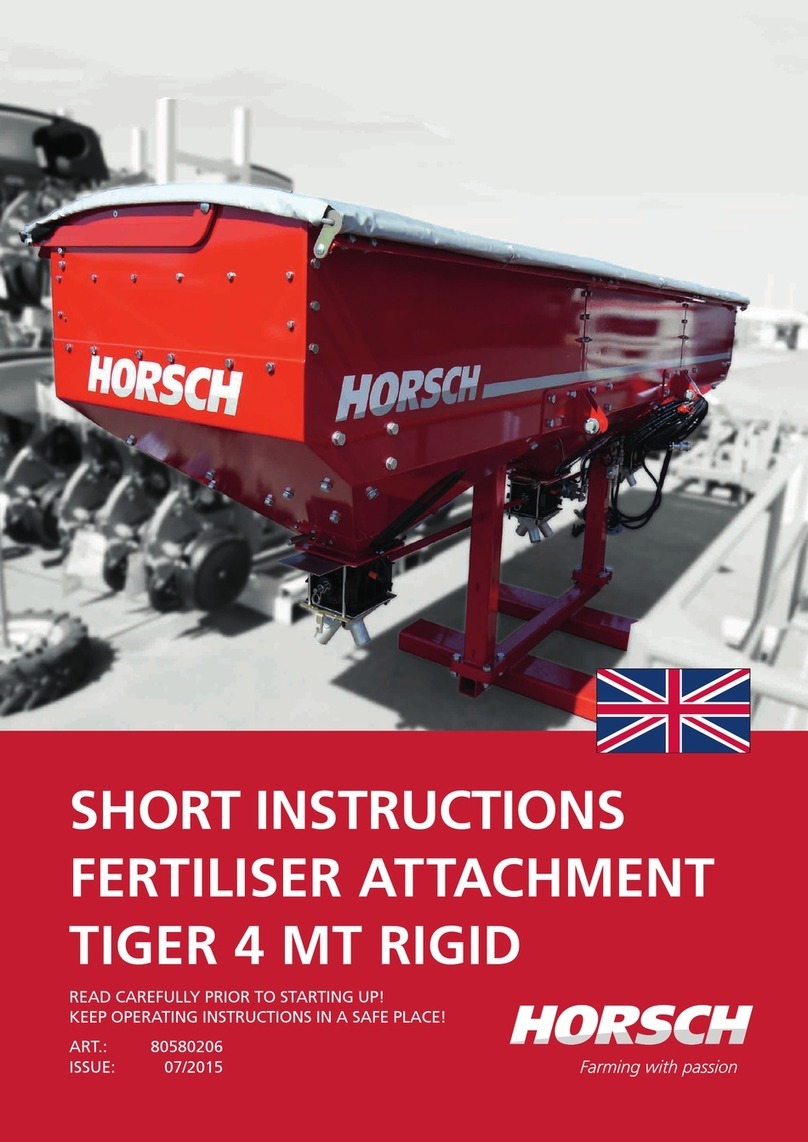
Inhaltsverzeichnis
Introduction...................................................4
Foreword ........................................................4
Notes on representation .................................4
Service............................................................5
Warranty claim processing .............................5
Consequential damage...................................5
Safety and responsibility.............................6
Intended use...................................................6
Qualication of personnel...............................7
Children in danger ..........................................7
Personal protective outt................................8
Safety in trac................................................8
Safety in operation..........................................9
Fertiliser and dressed seed ..........................12
Environmental protection..............................12
Retrotting and conversions.........................12
Care and maintenance .................................13
Danger zone.................................................14
Safety stickers ..............................................15
Commissioning...........................................18
Delivery.........................................................18
Transport ......................................................18
Installation ....................................................18
Technical data.............................................19
Type plate.....................................................21
Requirements for the tractor.........................22
Calculating the ballasting..............................24
Construction ...............................................26
Overview.......................................................26
Hydraulics.....................................................27
Marking of hydraulic hoses...........................37
Aluminium clips.............................................38
Lighting.........................................................39
Instruction stickers........................................40
Operation.....................................................44
Commissioning / Tractor change..................44
Connecting/Transport position......................44
Folding..........................................................46
Unfolding....................................................47
Folding in ...................................................47
Parking .........................................................48
Folding Tiger 5 - 8 MT with DuoDrill ..........49
Setting the transport height........................49
Depth setting ................................................51
Basic setting ..............................................51
Tine eld depth setting...............................51
DiscSystem depth setting ..........................51
Pendulum compensation double
RollPack packer.........................................52
Checks..........................................................54
Care and Maintenance ...............................55
Cleaning .......................................................55
Lubricating the machine ...............................55
Maintenance intervals...................................56
Storage.........................................................56
Assembly groups .......................................57
Tines.............................................................57
MulchMix coulter...........................................57
Levelling discs ...........................................58
Border discs..................................................60
DiscSystem...................................................61
Slewing undercarriage..................................62
Optional equipment....................................63
TopRing Packer ............................................63
SteelDisc Packer ..........................................64
Rear drawing hook .......................................64
Fertiliser distributor.......................................65
Bout marker..................................................66
Rear two-point hitching.................................67
Maintenance overview..................................68
Waste disposal ...........................................73
Appendix .....................................................74
Tightening torques........................................74
Index ............................................................76
2






























